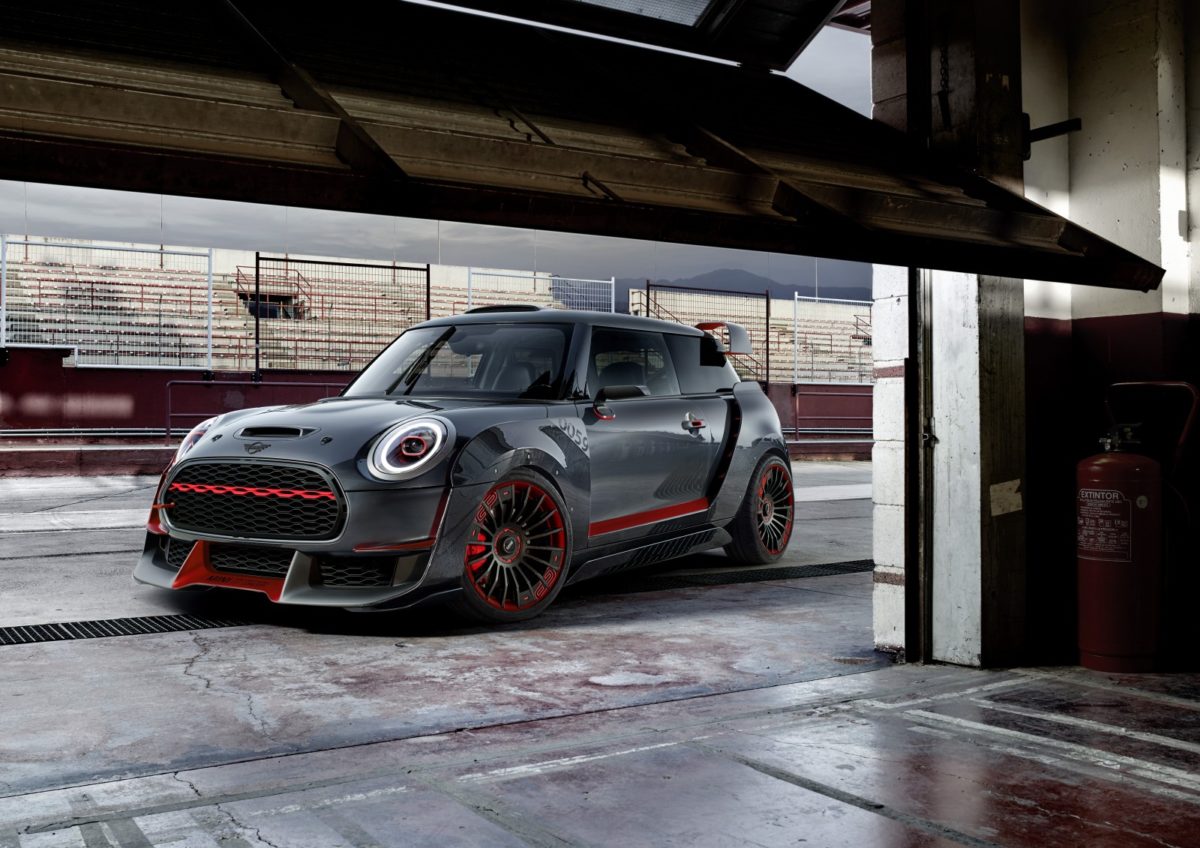MINI John Cooper Works GP Concept returns brand to motorsports roots

If you go far back enough through MINI’s timeline, you will discover a past steeped in racing. The BMW Group is trying to rekindle that competitive flame with the John Cooper Works GP Concept design study, a model bred for the track.
“The MINI John Cooper Works GP Concept is all about the unfettered feeling of driving and levels of performance found in motor sport competition,” said Peter Schwarzenbauer, member of the BMW AG board of management also responsible for Rolls-Royce and BMW Motorrad. “This is driving fun in its purest form.”

Called the “maximum MINI” because of its exaggerated proportions, the model is a larger than life version of the standard variant. For example, the GP possesses a much wider stance thanks to flared fenders, aggressive front and rear lower bumper aprons, deep side skirts and a massive hatch spoiler. Much of the body aero is constructed out of carbon fibre to keep the weight low and the fun factor high.

Designers have created a new take on the signature black and red paint scheme of JCW — the body is dipped in Black Jack Anthracite, which depending on the light changes shades slightly, and the accenting trim is finished in a more vibrant Curbside Red Metallic. The number 0059 stamped into the quarter panel is a reference to the 1959, the year the brand was born.

Peer inside the racy vehicle and you’ll notice the cabin is just as serious as the exterior. A roll cage provides reinforcement, surrounding only a pair of bucket seats with five-point safety belts. The instrument cluster is all digital, and is paired with a Head-Up Display feeding the driver important information directly into his or her line of sight so concentration remains on the road whipping by.

While sparse, the interior has still been given a dash of style using smooth leather on the headrests bolsters, a third Highspeed Orange highlight colour on the belt straps and steering wheel stitching, and an interesting 3-D knitting technique used to create the textured central section of the seating.

